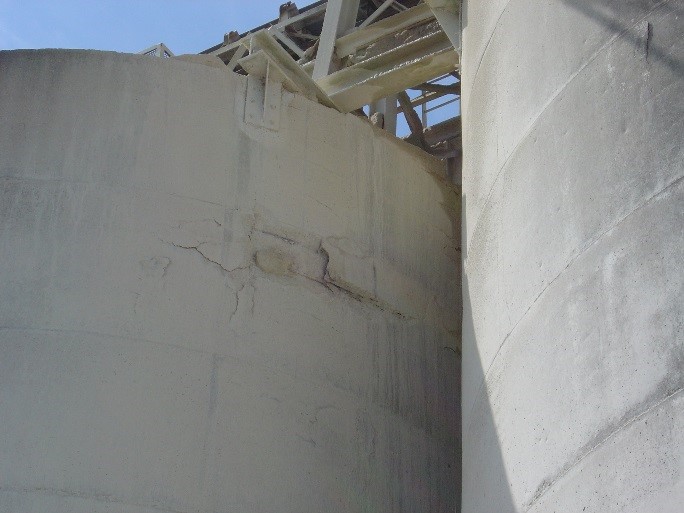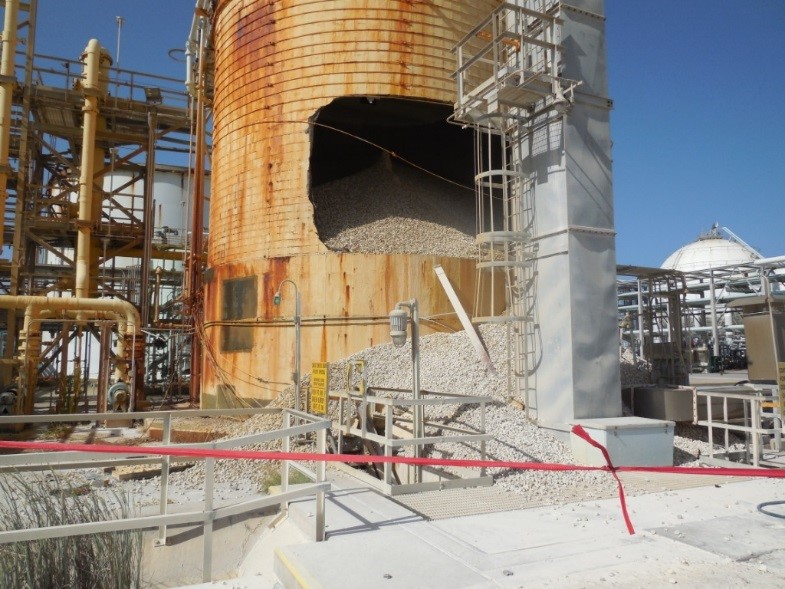Regular silo inspections, on annual, two- or five-year intervals, can help identify problems that increase the risk of structure collapse. Based on inspection results, preventive maintenance can be performed to avoid larger more expensive repairs later.
Time, weather and usage are all contributors to the degradation of silo structures. The signs of degradation and the failures observed are different in concrete and steel silos. For example, with steel silos, those signs include wall deformations, buckling, wear and corrosion. For concrete silos, those signs can be observed in the form of silo wall delamination, cracks, rebar corrosion and discharge configuration issues.

Silo Inspection Components
Proactive silo inspection helps ensure continued, safe operation. Common problems include various roof issues, wall cracking, material buildup and cone failures. Frequent, regular observation of the whole silo structure is the best way to catch potential problems early and avoid possible safety issues.
Silo inspection companies examine aspects known to be potential areas of failure. In general, this includes foundations, walls and roofs. For concrete silos it also includes cones or discharge configuration.
Foundations
A strong foundation is integral to wall stability and the overall safety of the workplace or structure. Cracking foundations and erosion of earth around the foundation are relatively easy to identify during general inspection if above grade. Other issues, such as settlement, can only be identified through close examination by a qualified professional.
Walls
Walls are placed under an enormous amount of stress horizontally and vertically during the normal useful life of the concrete structure or silo. These stresses can result in horizontal, vertical or diagonal cracking of the concrete walls or offset stave joints in the case of stave silo construction. Cracked silo walls can indicate delamination which greatly comprises the structural integrity of steel reinforcement in the silo wall and can potentially lead to failure or collapse if not repaired immediately.

Cones, Floors, Shelves and Tunnels
Silo discharge cones are frequently at the forefront of silo failures and should be of utmost importance in being inspected for wear, weld condition and structural integrity. Silo floors, shelves and tunnels are particular areas of concern with regard to concrete deterioration as they typically involve an interface of steel and/or concrete which can draw moisture, introduce or show signs of movement relative to structure and lead to water and material leaks.
Roofs
As with any structure, the roof generally receives the brunt of the physical and environmental abuse. Proper roof maintenance is needed to keep the materials within the silo safe and dry and prevent further damage to other concrete structures.
Silo roofs are subject to abuse from overfilling, explosions, vibrations and movement during silo loading or unloading and overloading, as well as environmental abuse. Buildup of excess material leaking from conveyors on top of the roof can put undue stress on the internal infrastructure and lead to roof sag which increases the risk of collapse.
We offer advice on all levels of silo inspection, repair, dismantling and reconstruction as well as concrete repair services for industrial concrete. To begin your silo inspection process, contact us today.
Be sure to check out our full library of silo inspection videos on 





